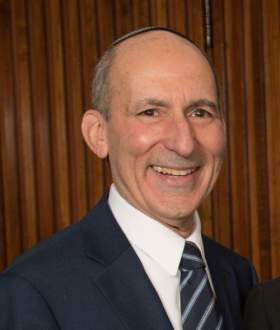Of Changing Times and Enduring Wisdom
Reflecting on the past, historians often describe eras based on intellectural, political, economic, cultural, or social currents of the time. The Dark Ages, Golden Age of Spanish Jewry, the Renaissance, and the Enlightenment are examples of such descriptions. The “naming” of such eras is, typically, long after the particular period described.
American Jews have, for more than three score years, experienced extraordinary acceptance in American society. By the 1950s, public pronouncements of anti-Semitism were, by and large, considered in poor taste; discrimination in college admissions, employment, and housing dramatically declined, as compared to the 1920s and 1930s. By the 1960s and 1970s, Jews of college age, who had grown up in post-World War II America, were unlikely to have experienced anti-Semitism; this reality obtained for two generations. The participation and, often, leadership of Jews in efforts to protect and advance the interests of marginalized individuals and groups were focused outward. Jews themselves, it seemed, were part of the privileged majority.
It is too soon to engage in periodizing or describing the most recent generations of Jewish history in the United States, but it has become all too apparent that Jews born in the twenty-first century are encountering anti-Semitism in ways not experienced by their parents and grandparents. The “other,” increasingly, includes Jews. It is uplifting to hear the unequivocal denunciation of anti-Semitism by government officials at every level. Yet, the hearts and minds of individuals and groups of people sharing prejudices and conspiracy theories – amplified and disseminated through social media – cannot be regulated.
As we educate our children to respect differences and to champion the inclusion of all – rooted in the foundational Jewish belief in the dignity of every human being -- we share the unfortunate reality that there are those who look askance at others because of skin color, ethnicity, sexual identity, religion, or other distinguishing characteristic. Jews, we must include, are among those that some see as “other,” a perception that sometimes translates to negative comments (or worse). In addition to engaging with government and educational authorities to ensure that our children are safe, there is, I would suggest, something else we can do for them: enable them to appreciate the positive value in their Jewish heritage and identity.
The same holds true for our own engagement in Jewish learning and living. Whatever description might, someday, attach to this era, the majesty of Jewish wisdom is enduring; it can and does enrich the lives of those who embrace it. There is no more appropriate time than the present to chart our path to deepened Jewish engagement, whether through study, involvement in synagogues and/or other Jewish community organizations, political action, volunteer service, or other routes. As Hillel taught: If not now, when?

